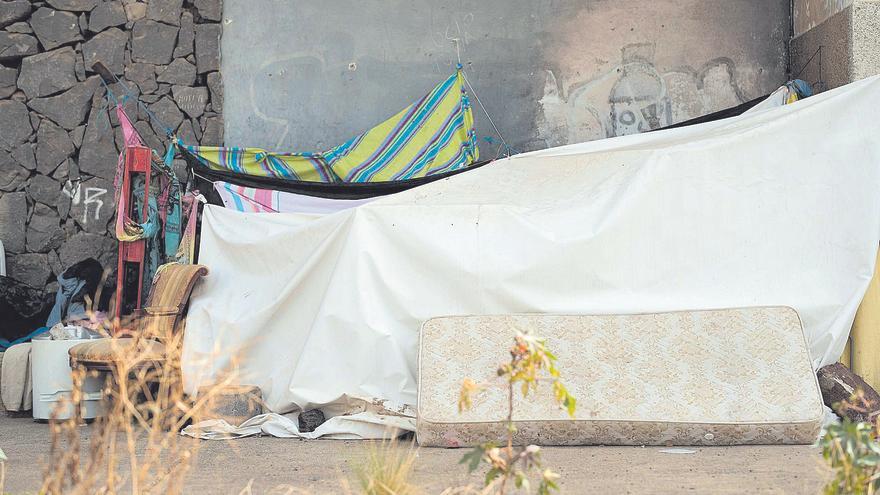
The annual report of Cáritas, presented this week, puts the figure at 2,738 people who are homeless on the Island, almost a thousand more in the last year. The Cabildo receives the study ‘Extreme residential exclusion in Tenerife in times of Covid’, which represents a devastating diagnosis of those who live on the street, why and how such a determining factor as the coronavirus pandemic has influenced them.
The second Caritas study on homelessness in Tenerife It covers all of 2021 and establishes that 2,738 people are in a situation of extreme residential exclusion on the Island. They are almost a thousand more than in 2020 when there were 1,784, according to the first study corresponding to the second half of that year. In 42.8% of cases (1,173 people), the situation is directly due to the socioeconomic and health crisis caused by the Covid-19 pandemic. The scientific work responds to several unknowns: who lives on the street, how many there are, why and to what extent a factor as decisive as the pandemic has affected them.
The profile of the homeless people in Tenerife it is that of a man, although women, around 45 years old, Spanish and settled mainly in the Metropolitan Area, increase, although those in the South rise.
The Caritas multidisciplinary teams they have acted on the ground with improved methods and more contact with those affected. This is affirmed by the coordinator of Social Action of Caritas, Úrsula Peñate, who has directed the work.
The growth of this “social scourge” in Tenerife has been affected by the Covid-19 pandemic, which has limited access to administrative, social and health services. The latter are increasingly linked to technologies to which this population did not have and does not have easy access.
The increase from 1,384 to 2,738 homeless people occurs in all the analyzed resources. In the data of the Caritas Street Unit (from 797 to 1,257); in the Customer Service City Hall of Santa Cruz (683 to 856) and La Laguna (87 to 180); in the Base 25 project (86 to 206) and in the accommodation initiatives of the humanitarian organization (from 87 to 180).
Until 37 percent live directly outdoors, but also in hostels or night accommodation centers (8.7 percent). 15.3 percent of those affected do so in some house but no longer in theirs because they have lost them either due to evictions or because they cannot pay the rent. Another 15.8 percent stay in cabins, shacks, caravans or caves.
Caritas has identified that 73.9 percent of these people are menbut there are more and more women and they have gone from representing 20 percent in 2020 to 25 percent in 2021, and the trans group is also rising among the affected people.
By municipality, Santa Cruz de Tenerife is the one in which the most homeless people have been located, 953, followed by Arona, with 441, La Laguna, with 442, Adeje, with 166, Puerto de la Cruz, with 134 and Granadilla , with 128.
Cáritas has detected in this study the persistence and chronification of homelessness, since 62 percent of those affected have been homeless for more than a year and 32 percent for more than three years.
Unemployment, job insecurity, lack of public aidthe exhaustion of the unemployment benefit, the exclusive requirements to access the real estate market, evictions and foreclosures, mental health and addictions are some of the reasons that those affected explain in the first person as the origin of their situation.
This study also offers proposals. Among others, the need for a diagnosis of housing in each territory or that forced evictions cannot be carried out without a housing alternative. Also have provisional accommodation and that municipal emergency aid is not conditioned to minimum registration periods.















